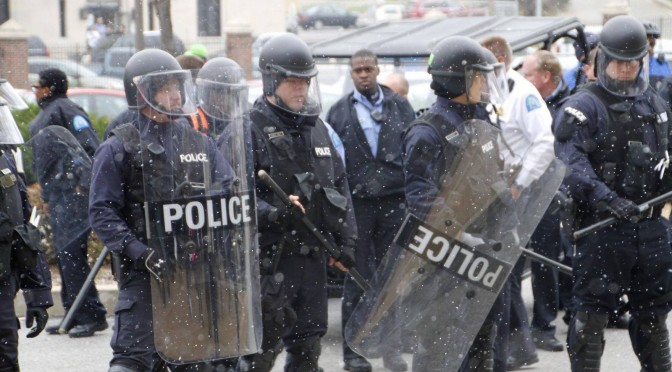This article was originally posted in Quartz.
Earlier this week, Missouri governor Jay Nixon ended the curfew imposed on the community of Ferguson over the weekend. Residents had been required to be indoors between midnight and 5 am.
It’s not surprising but it’s one of many moves authorities got wrong in their reaction to riots over the shooting death of Michael Brown.
The toxicity of curfews in the St. Louis suburb sparked additional and perhaps retaliatory unrest. The governor’s decision to restrict the movement of Ferguson’s mostly black population exacerbated long-simmering anger toward law enforcement, roiled community leaders, and extended confrontations with residents. Establishing this curfew was only one of many missteps by a clearly overwhelmed police department.
And yet, alarmingly, the tactic itself is gaining acceptance in major American cities.
Officials in Ferguson point to looting as cause for the curfew but, quoting Nixon, the “handful” of individuals responsible was not ignored by residents. The community adamantly supported shopkeepers by standing with locked arms in front in front of commercial establishments to prevent looters from exploiting tensions on the ground.
One bright moment in recent days was the appointment of the State Highway Patrol, led by captain Ron Johnson — an African American — to supplant local police. Johnson is a Ferguson-area native with strong local ties whose demeanor and willingness to engage community members revealed sporadic but poignant moments of calm. His approach has been touted as archetypal community policing widely seen by minority leaders in cities across the country as a means to reduce crime and community antipathy toward police departments.
But these tactics now seem antithetical to the practices of law enforcement agencies in cities across the country seeking to curb violence among youth and respond to crises. Curfews have become a popular though highly controversial tactic in major cities. Another Missouri municipality, Kansas City, adopted its curfew in 2011. Las Vegas, Oakland and Indianapolis are considering similar measures. Interestingly, Philadelphia and Baltimore, each with African American mayors, enacted curfew laws. Baltimore’s law, which went into effect on Aug. 8, is widely viewed as the most stringent in the country. In that city, youth 14 to 16 years old are required to be indoors after 10pm on schooldays and 11pm other days — including the summer. Children under 14 must be indoors by 9pm every night.
Community leaders — the majority African American — and parents, are mixed on their efficacy given the broad-brush approach to curbing behavior involving predominantly minority populations charging that these laws are patronizing and discriminatory. While some residents in these cities see it as a means to protect children from dangers lurking during the evening hours, others contend that curfews can foster more negative confrontations between youth and police by criminalizing the behavior of young minority men and women. Opponents likened the deleterious effects of curfews on communities of color to the popular but highly controversial stop-and-frisk strategies used by law enforcement. The policy was abandoned in New York City by democratic mayor Bill de Blasio after a court ruling questioning its constitutionality, but the policy is still in effect across the country.
The curfew imposed to quell protests in Ferguson was combined with prolonged engagement by a hyper-militarized police force seemingly ill-suited to engage the community they are sworn to protect in any meaningful way. The police department (more than 90% white) had clearly not altered its tactics and outreach to a community that has grown from roughly 52%, to almost 70% in the last decade. The heavy-handedness of the department over several days contributed to the failure of the curfew to subdue unrest. The racial disparity in power and authority is emblematic of what many cities are likely to see as African Americans and immigrant populations leave major northern cities for previously homogenous locales elsewhere. But there is a growing sense that recent demographic trends notwithstanding, minority youth are viewed as being inclined toward criminality prompting public policies that leave their behavior highly scrutinized and restricted.
To be sure, there were actions taken by some in Ferguson that should rightfully raise the ire of law enforcement who would be within their right to protect themselves and constituents. Johnson, whose tone and diplomacies have been lauded by many observers, is being asked to navigate empathy for his neighbors, the law he is sworn to uphold and, perhaps, identification with the historic and current struggles of a racial and ethnic group to which he feels some allegiance. It is clear, however, that his style of policing, employed earlier, could have thwarted the escalation of the unrest that has captivated many for the last several days. And sadly, the willingness or foresight to expand his simple but meaningful engagement is unlikely in the near future in other Fergusons across the country.



